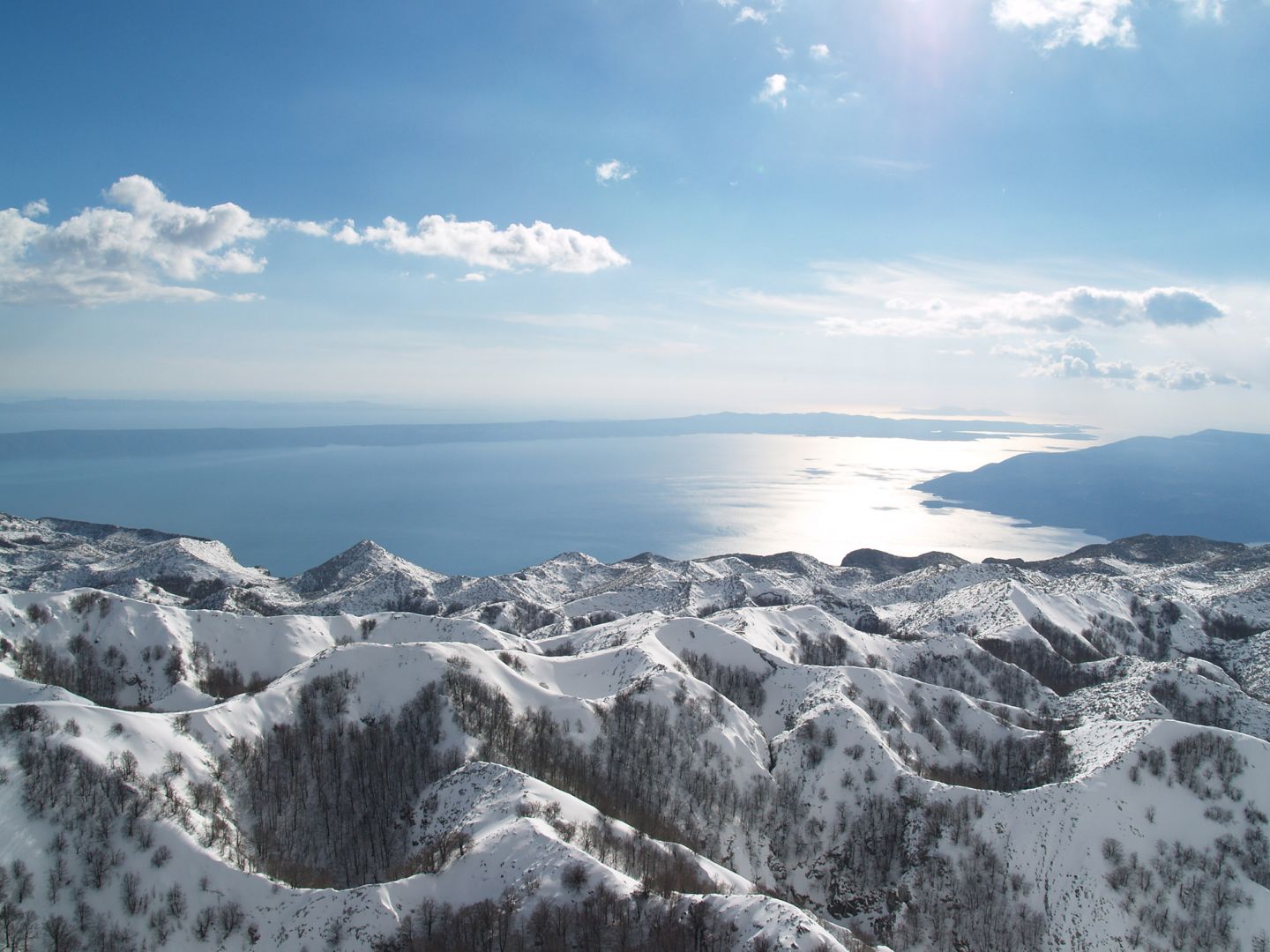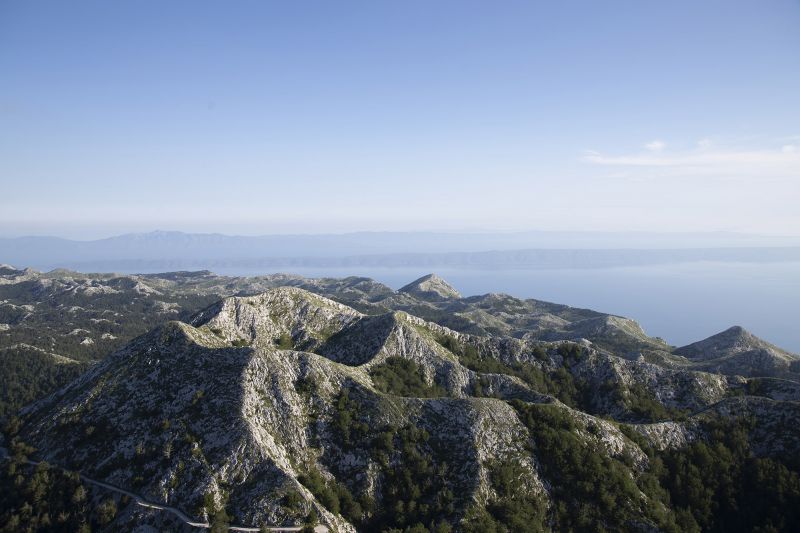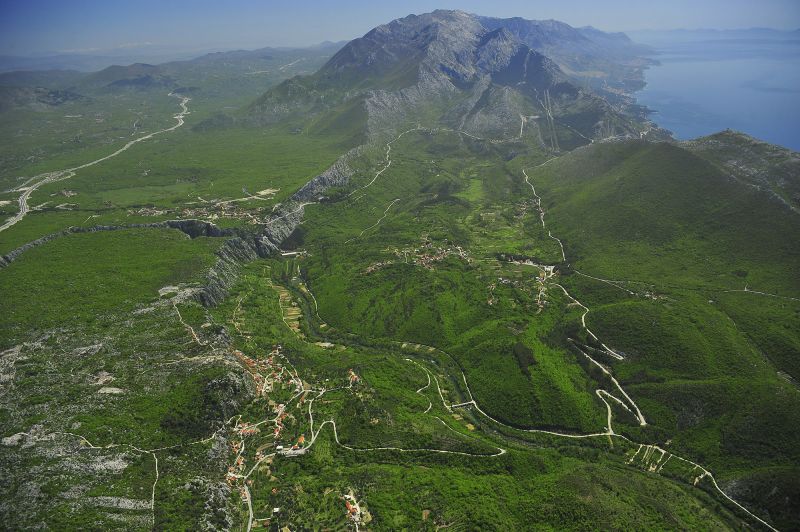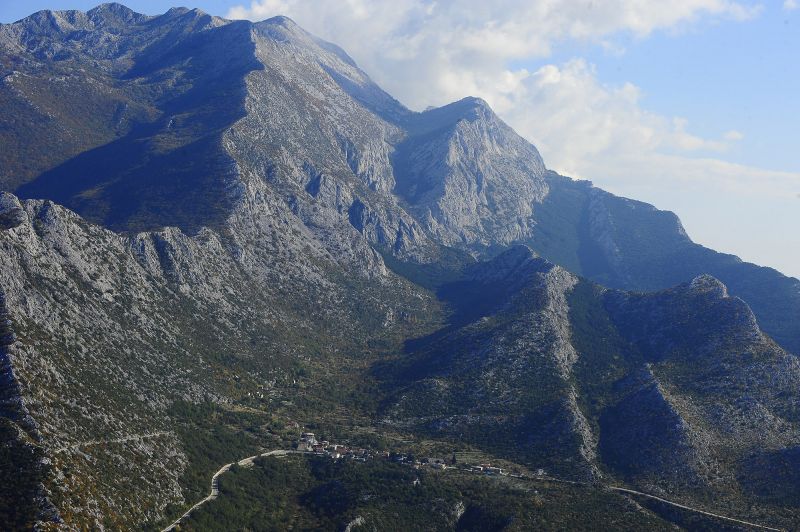The climate on Biokovo is the result of latitude, its geographical position in the Dinaric mountains, geological structure, relief, altitude, exposure to the relief air circulation, vegetation cover and other factors that have a significant impact on microclimatic characteristics of this mountain. Biokovo is the limit of two climates - Mediterranean and continental, and it determines the specific climate of Biokovo.
Air masses from the sea penetrate its coastal side, over the ridge and the surface of the mountain peaks. Biokovo mountain peaks to the north keep the penetration of cold masses from the interior of the continent, but also the interior flow into the Mediterranean. Biokovo air masses collide with mountains and sea. This confrontation of different air masses causes frequent changes of weather, which in the fall leads to excretion of rain and snowfall in winter which is retained in the spring. How important is the slope, direction and height of the mountain side, as as important as the geological composition of soil and vegetation cover.
The forests act as a kind of regulator precipitation, wind and heat. These are all factors that affect the elements of microclimate. In the general climatic characteristics of temperature inversions, the vertical currents and winds should be noted. All of this contributes to the diversity of the climate.
 English
English









 Parks of Croatia
Parks of Croatia





















